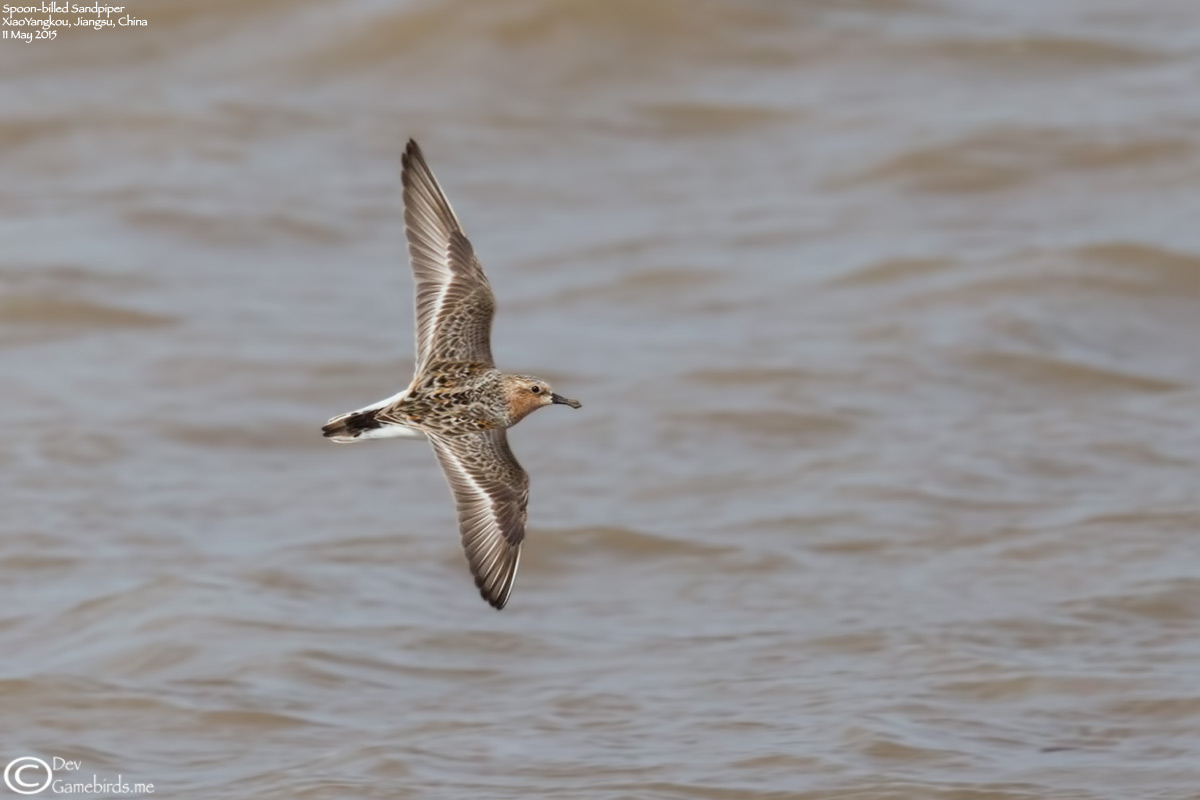
Just like every spring, i made a weekend trip to Yangkou this year as well and just like every year, old trails and mudflats have disappeared. It’s a new day and have to start from scratch to find out the best place for birds. Also, the “Good Samaritan’s” far cry for saving the birds of Yangkou from the foreign chemical companies is also because the sea wall road by the temple has been closed and the diversion is through the chemical industry park, if someone had to write a letter to the company it should have been done three years before and not just it’s been noticed recently.
I had a daytrip on May 5 to Yangshan and the passerines were really in less no’s. I was hoping i could see more in Yangkou. There were birds in the temple woods as usual but nothing like a box office crowd. Usually, the temple woods always teeming with passerines with a side show from resident Hoopoe, Red-billed and White-cheeked Starlings.
Most of the day was spent searching for birds as the best places from last year has been already disappeared. I still remember my first visit in 2011 October, the clouds of Shorebirds were very hard to miss even from a very long distance. Such a sight is no more possible and there were birds but nothing in those no’s. Bar-tailed Godwits were the majority among all the birds, they have clearly outnumbered the other commoners Terek Sandpiper, Grey Plover, Dunlin & Red-necked Stint. Also, for the first time i noticed the huge flock of Ruddy-Turnstones, 500+ birds during the high tide time was a treat to watch, they are splendid looking birds in their breeding plumage.
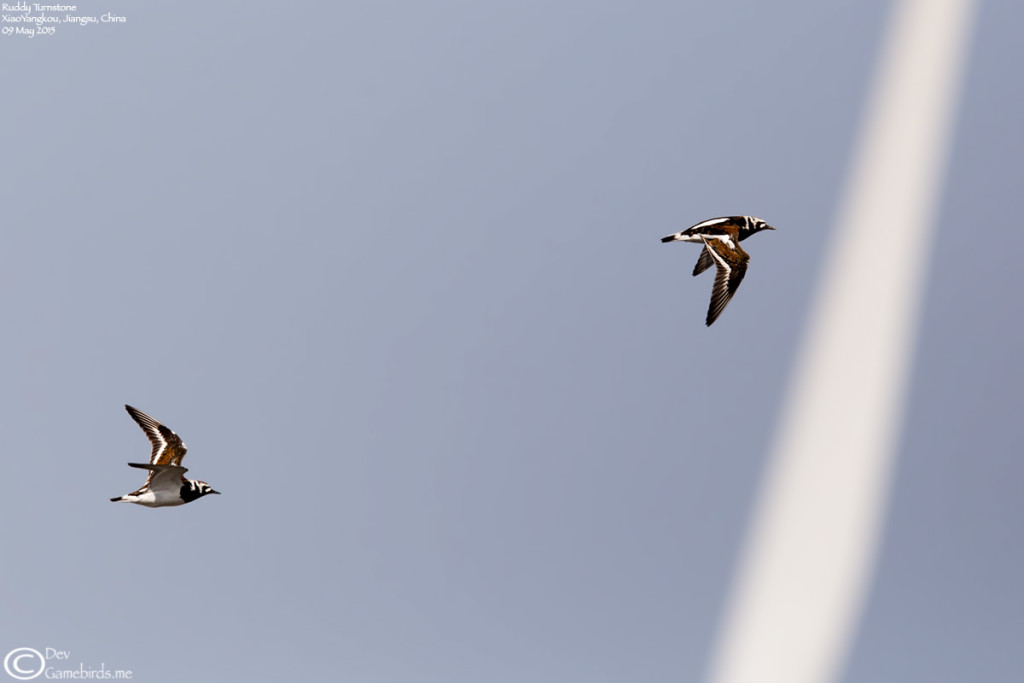
The stone turners
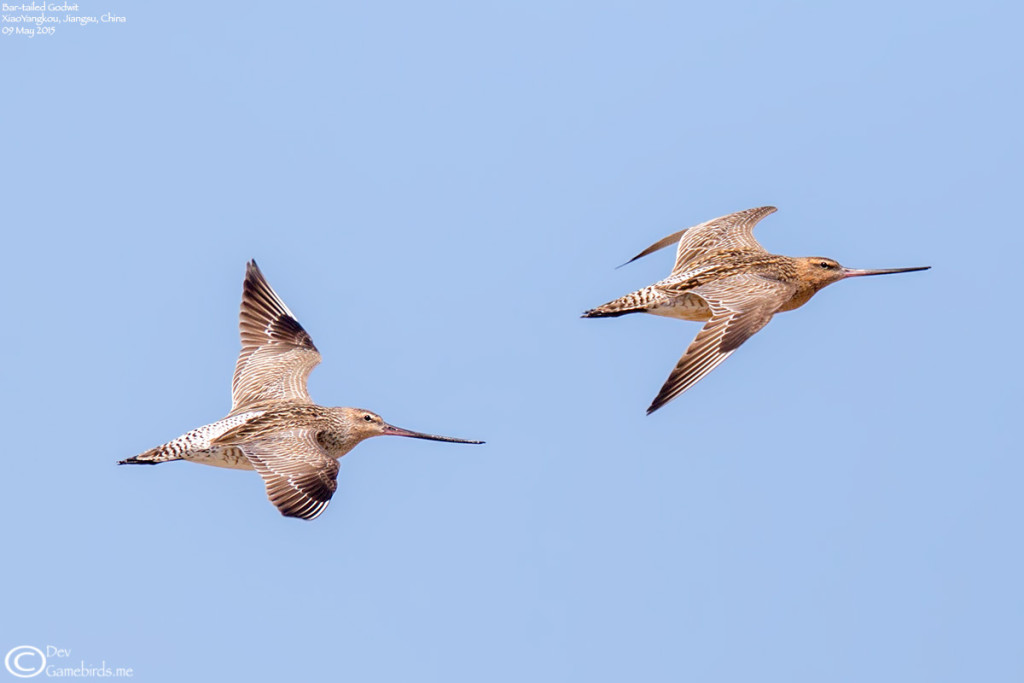
Bar-tailed Godwits in flight
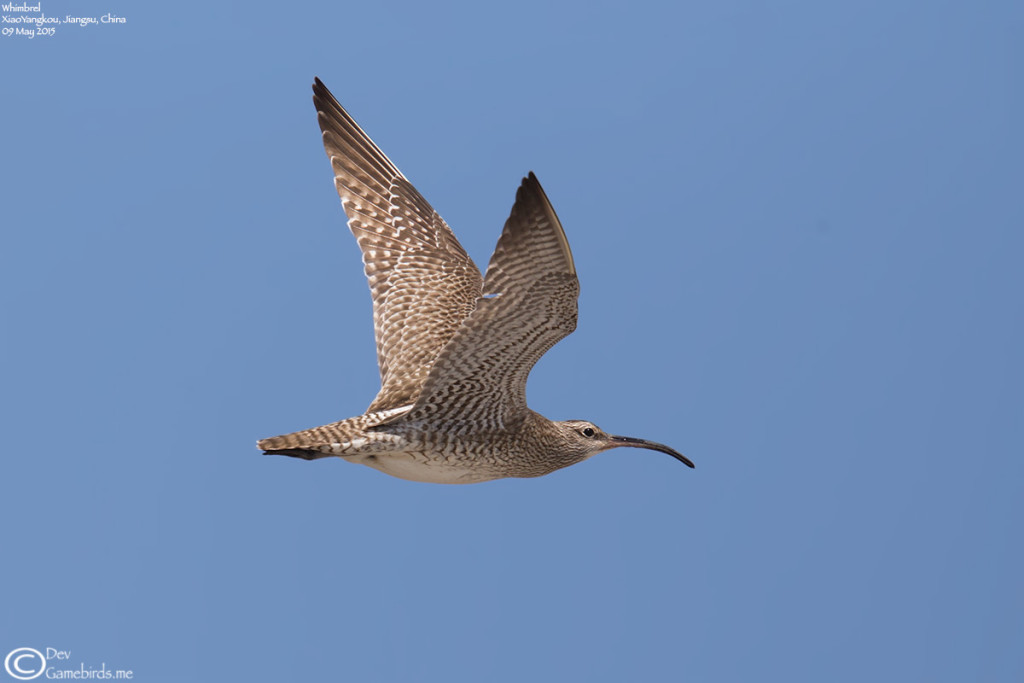
Whimbrel in flight
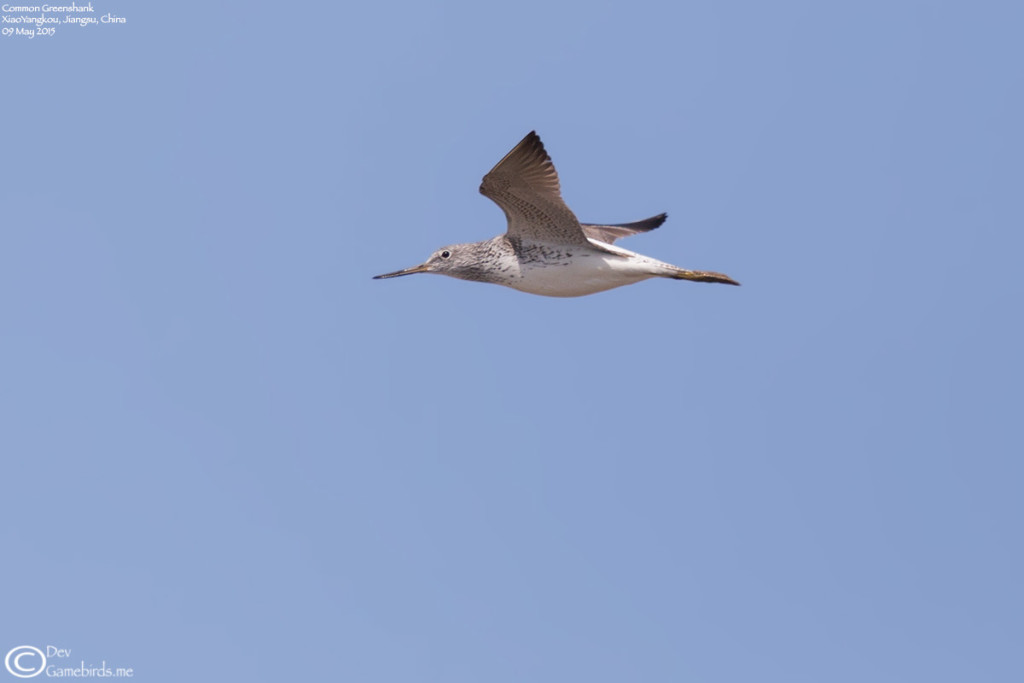
Just the Common Greenlegs
I wasn’t keen on finding Spoon-billed Sandpiper(though i would like to see a Nordmann’s Greenshank) as i have seen it in the past couple of years when Yangkou was just started getting the global attraction and the reclamation was in its toddler steps. I was mostly looking for the shorebird congregation. I was going up and down along the coast looking for mudflats and resting grounds during high tide time. Despite the scouting, the only thing i could find was extensive land reclamation and ferocious speed of new windmills being built on the mudflats.
When the tide started to rise, there were birds crossing the sea wall in small batches, again the majority were Bar-tailed Godwits, I dint notice a single Black-tailed Godwit in the high-tide flock despite scanning the birds for an hour. There was a single flagged Bar-tailed Godwit, probably flagged in Chongming. Before the tide came in, i sat down near one of the seashell collecting stand to see the smaller birds which are wading in a small puddle. There were 4 “Great Knots” were wading along with “Far Eastern Curlews“. Recently, Australian Government, listed “Far Eastern Curlew” and “Curlew Sandpiper” as Critically endangered. Which makes those two as high profile birds. There were good no of “Far Eastern Curlew” in Yangkou but i had tough time finding the later. In a total of two days, i came across only 25 Curlew Sandpipers which used to be thousands in the mudflats and pools. Even in Shanghai, there were only single bird in last autumn n spring. Perhaps, another bird looking at a grimm future?
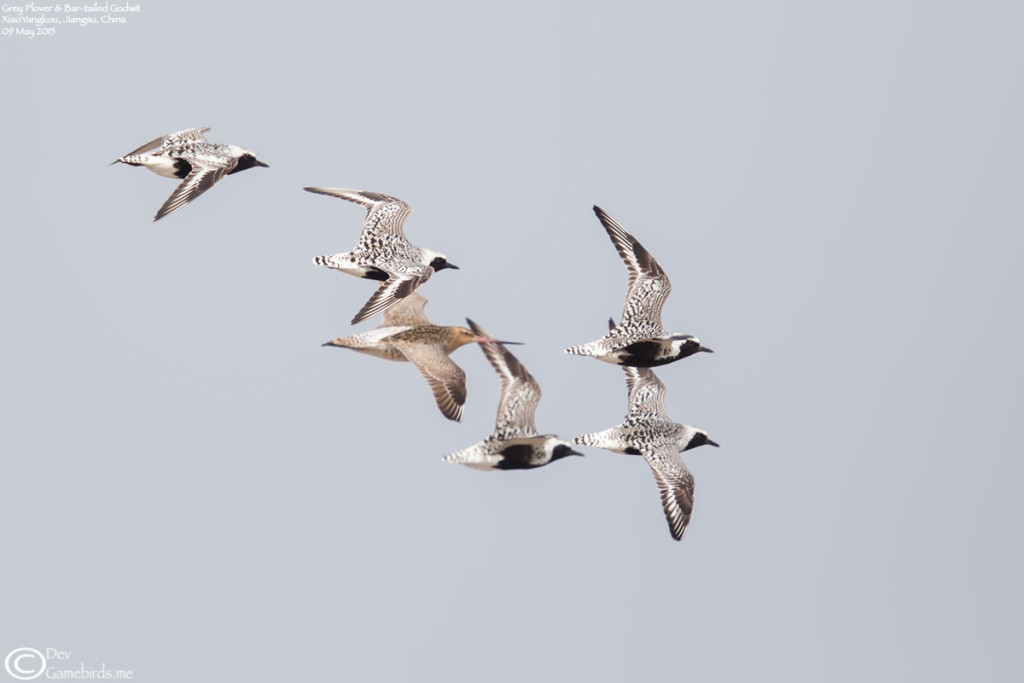
Breeding plumaged Grey Plovers & a Bar-tailed Godwit
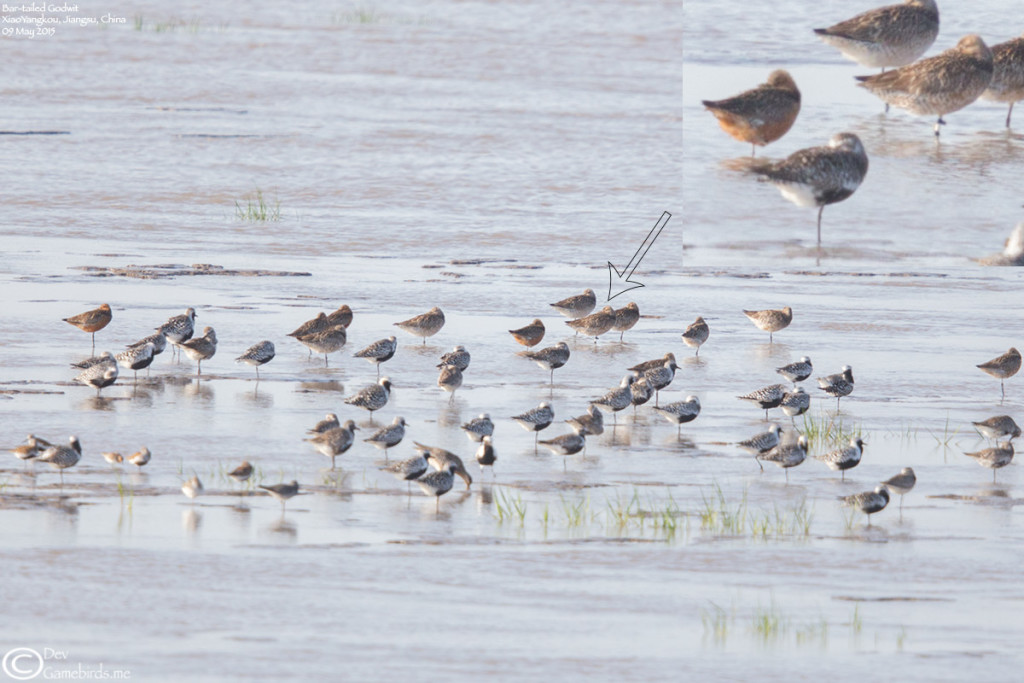
The black and white flag is a color combination of the bird is been flagged in Chongming.
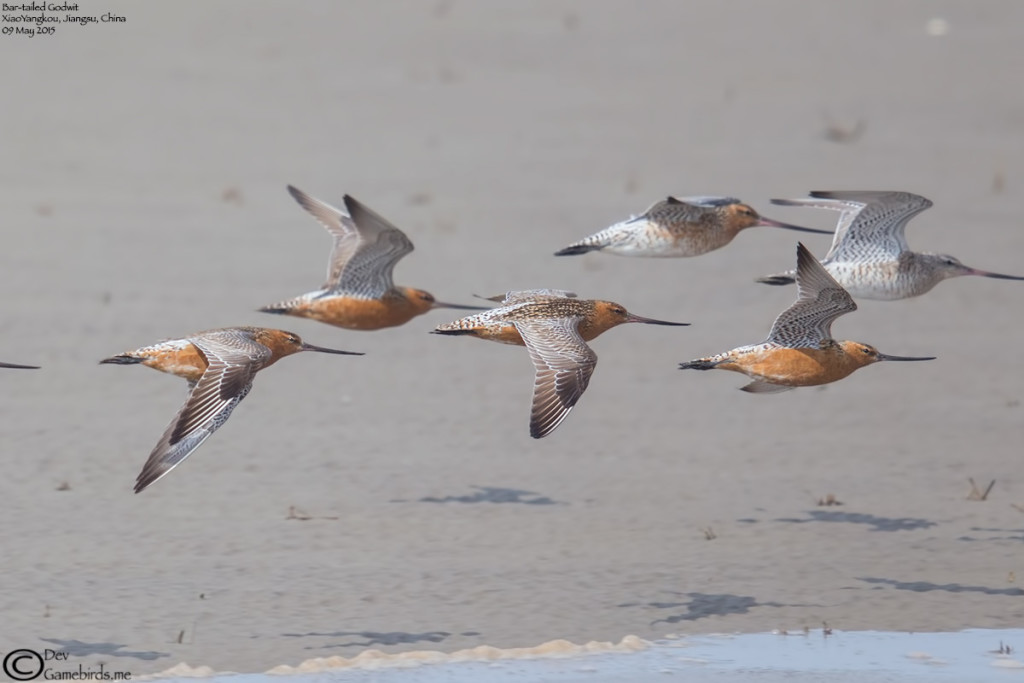
Bars n Belly
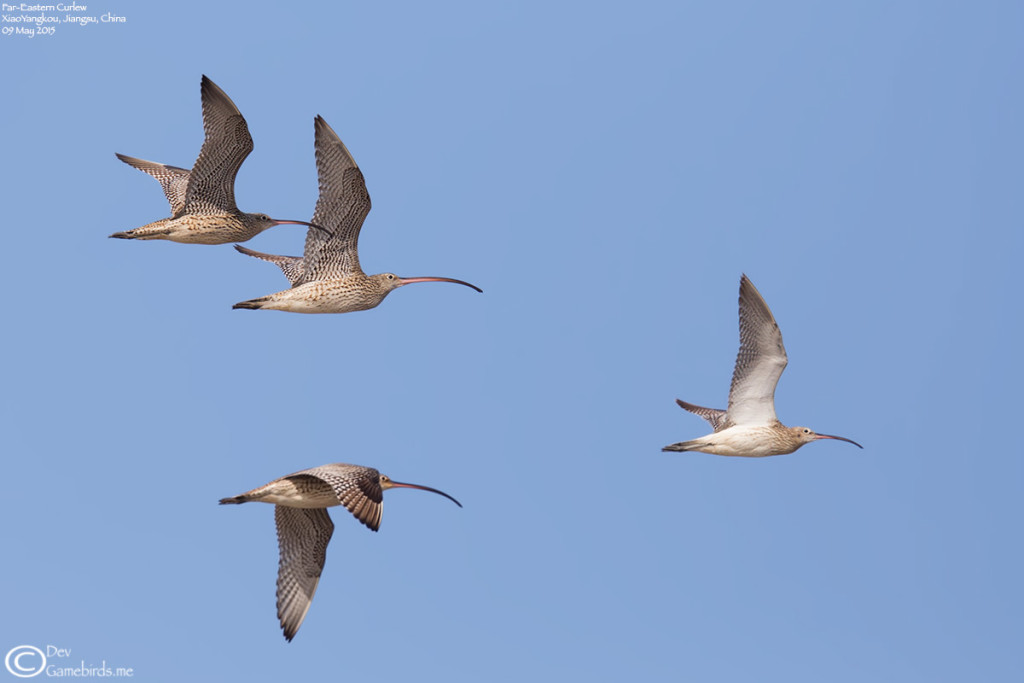
The odd man out
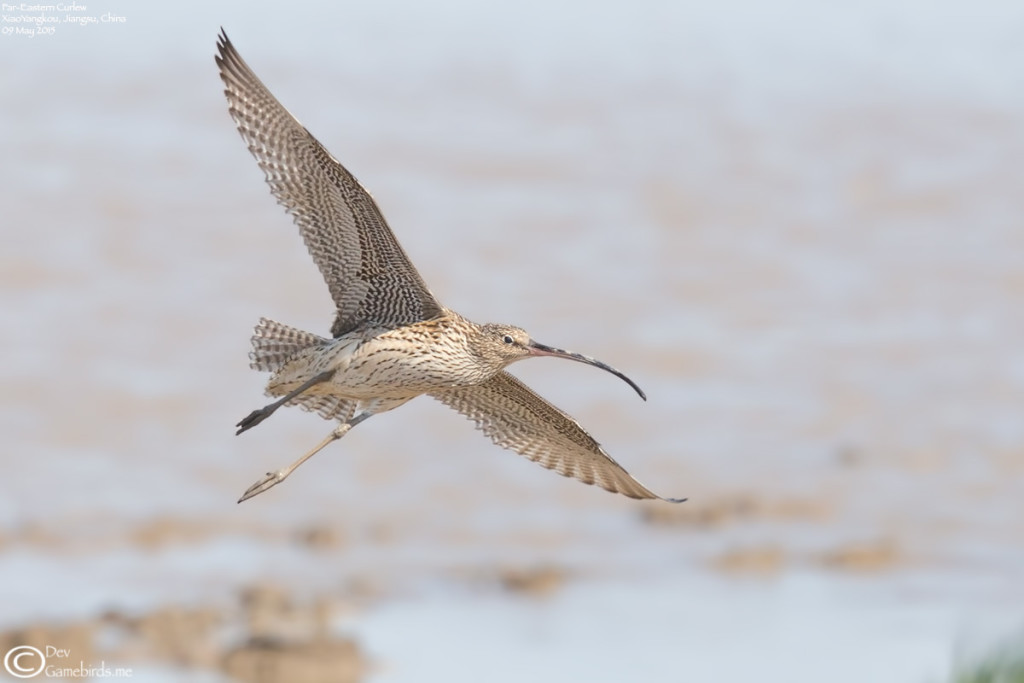
Another victim of the rapid land reclamation in the Yellow Sea
Back in the woods, local passerine breeders showed up very well, that includes Forest Wagtail and Yellow-rumped Flycatcher. This year is a glorious year for the “Marsh Grassbird“, witnessing a large no of birds (atleast 50-100) in Shanghai, i soon found them here as well, not in great no’s as in Hengsha but about 10 birds were nicely displaying in the marshes. A single “Pallas’s Reed Bunting” was is no mood for breeding, this is a very late bird for this region.
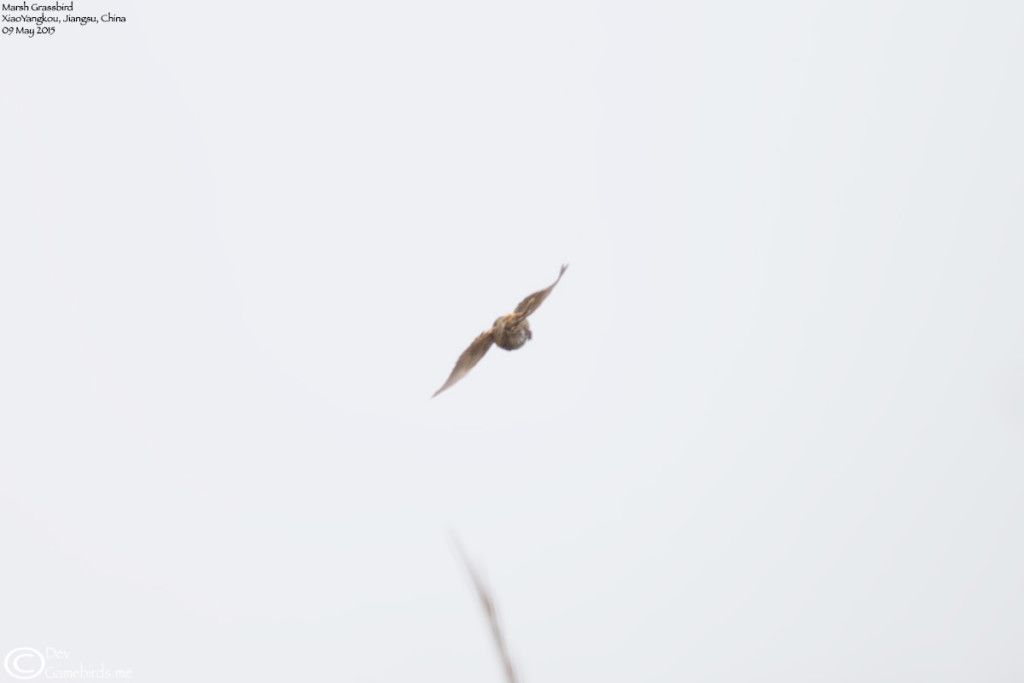
Displaying Marsh Grassbird
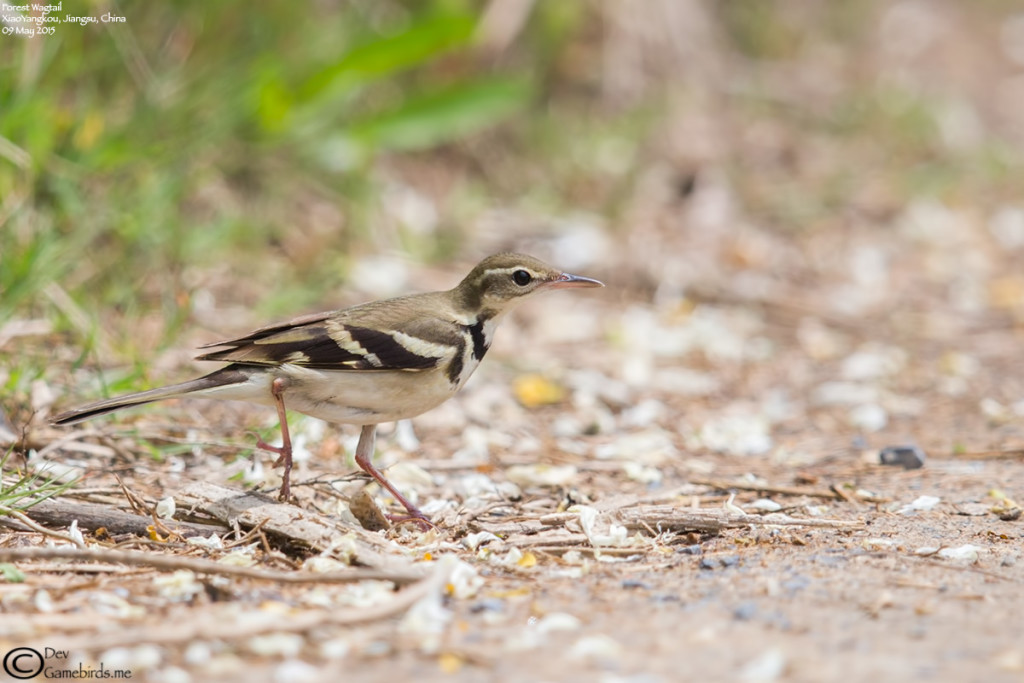
Fairy of the Forest!
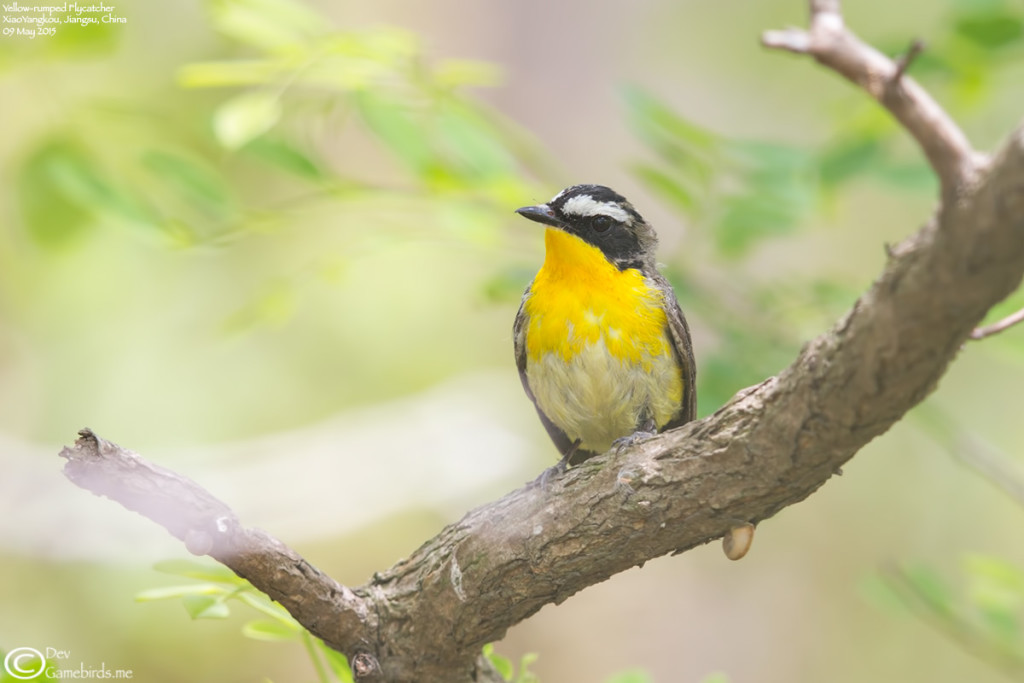
The Mystique local breeder
The local breeders also include the vulnerable “Saunder’s Gull” and the “Common Tern”. More details about the Gulls n Terns in the next post.

Common tern subspecies, Sterna hirundo longipennis
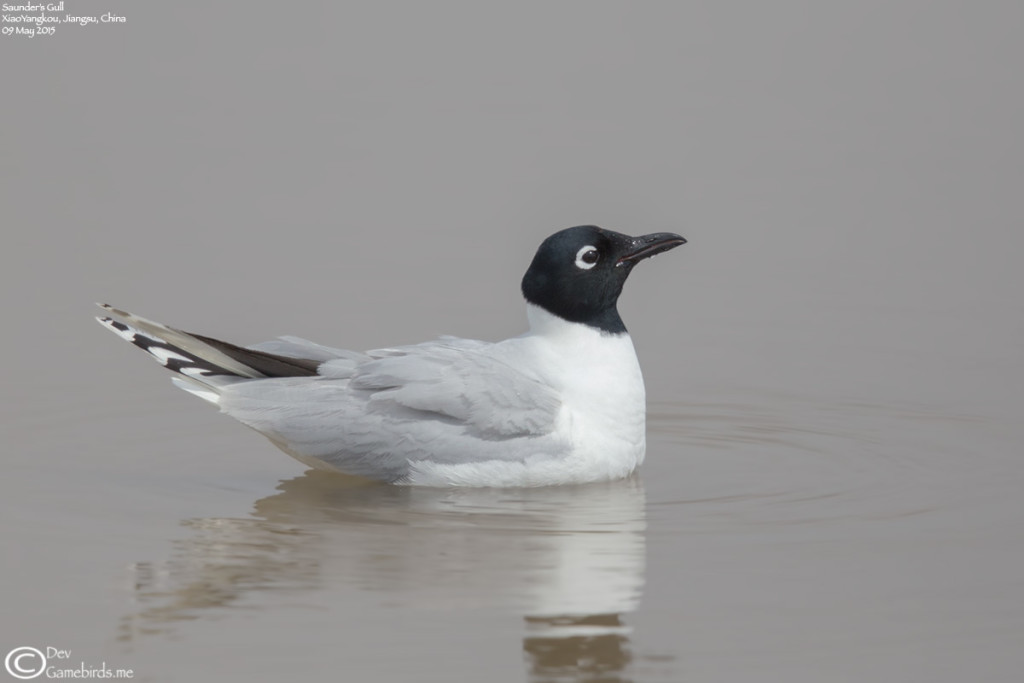
“The Robbers”
Saunder’s Gull is the most dominating character i have seen, they always seem to attack any bird despite the size to steal their catch. They are doing very well in Yangkou given they face so many hurdles like habitat loss, people stealing their eggs.
Few other common birds found in Yangkou during migration.
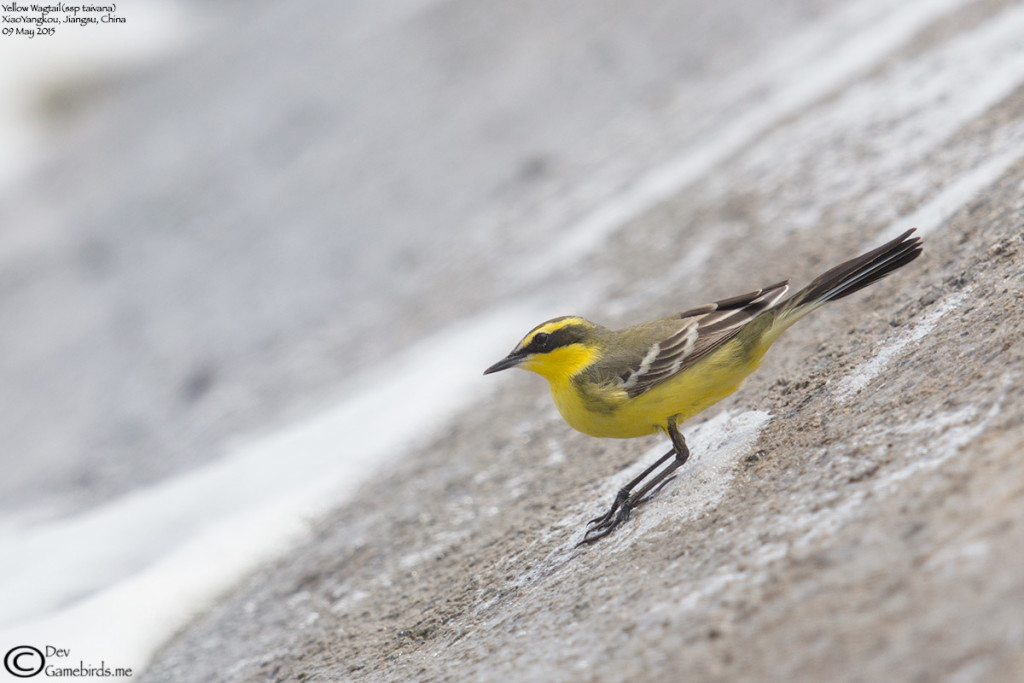
Yellow Wagtail subspecies, Motacilla tschutschensis taivana
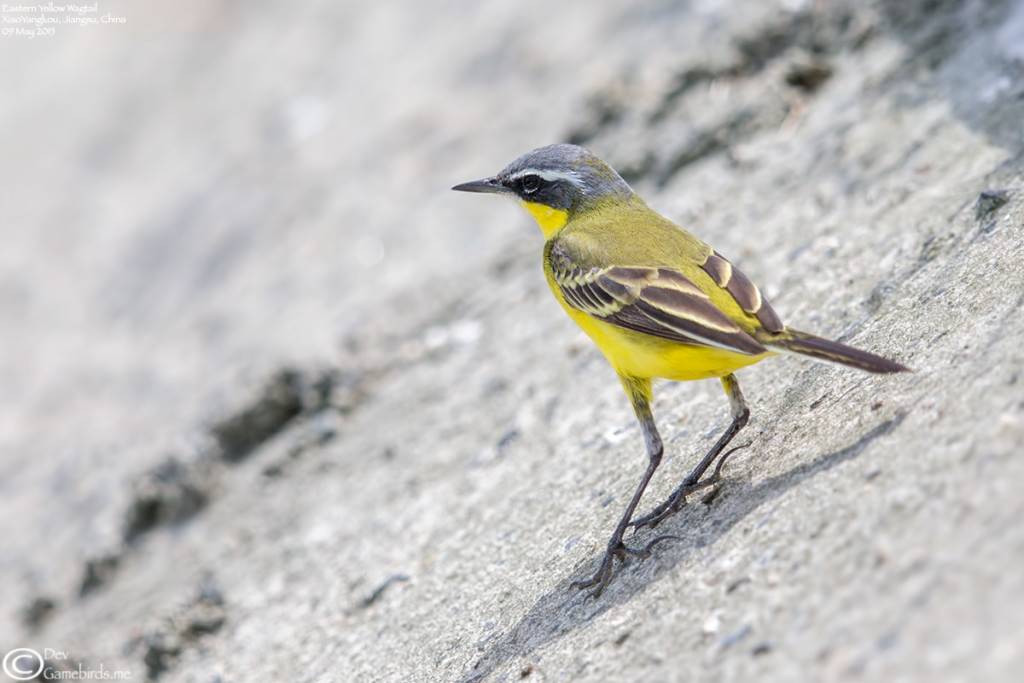
Yellow Wagtail subspecies, Motacilla tschutschensis tschutschensis
There was also macronyx subscpeices of Yellow Wagtail but I was’t able to photograph.
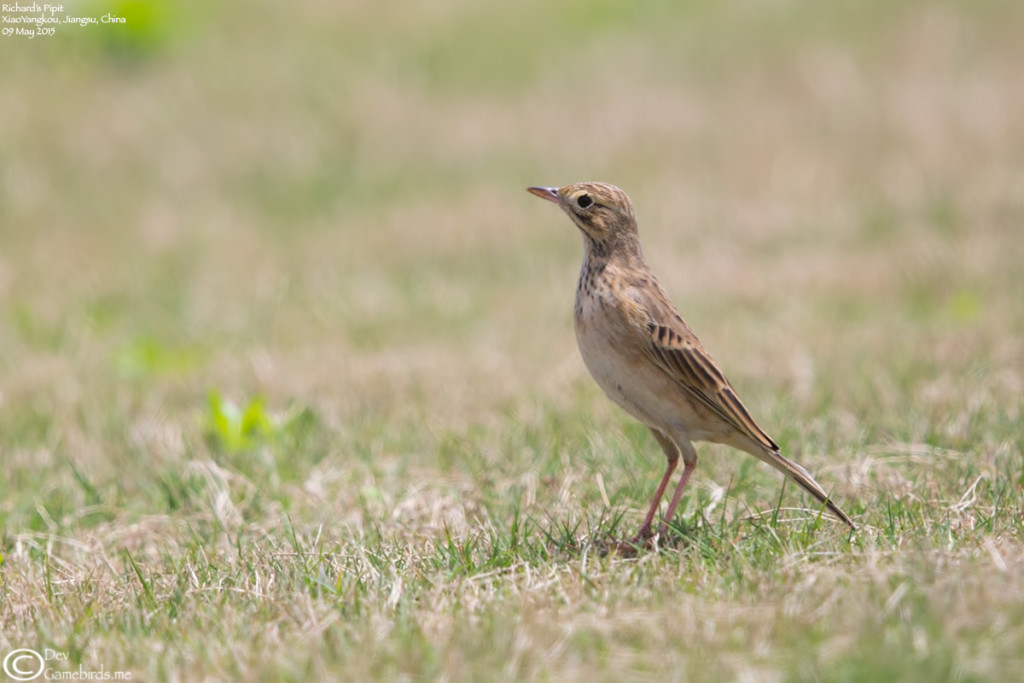
Plenty of Richard’s Pipit were seen
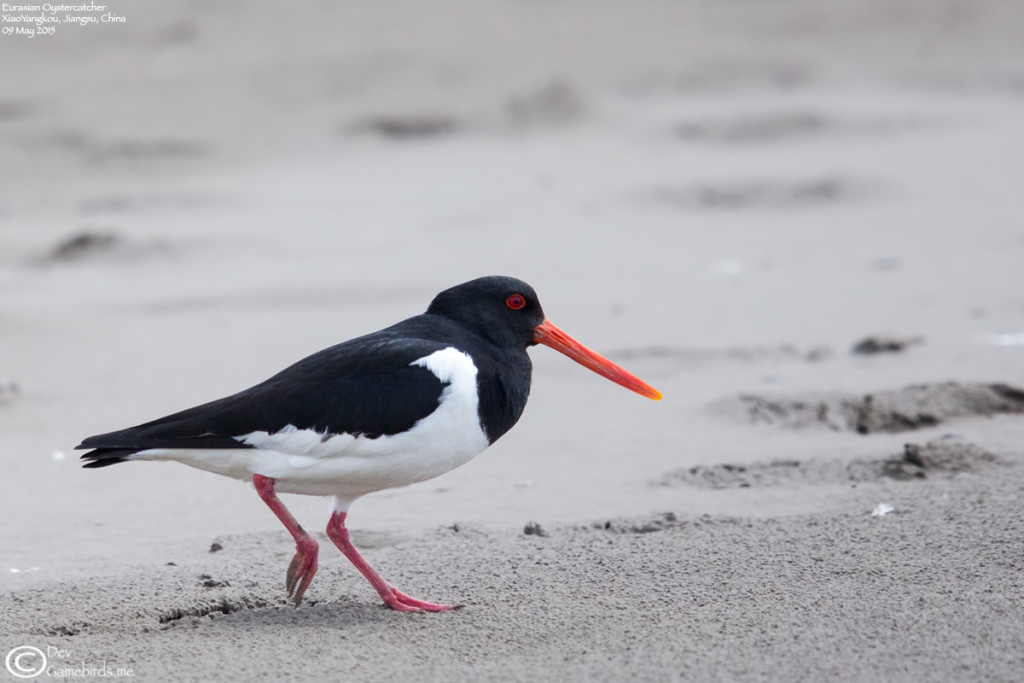
Most Colorful shorebird at any time of the year
Now, is the time for some bragging. Seeing a Spoonie is ain’t a big deal in Yangkou, there will be always one in a flock.
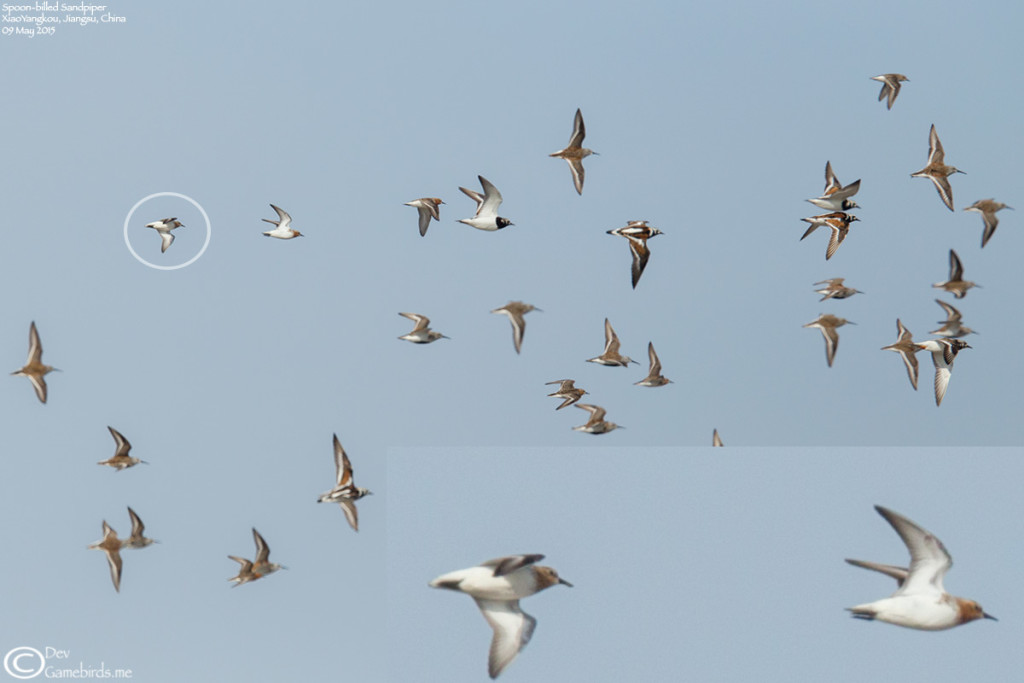
Where there is a flock of shorebird, there will be a spoonie
Correction : Initially, i thought the below shot is of the Spoon-billed Sandpiper but actually it’s a Red-necked Stint with a muddy bill.Check out the discussion in Flickr. Have to get the Nordmann’s and Spooner in Shanghai, if the mudflats are left untouched for next couple of years.
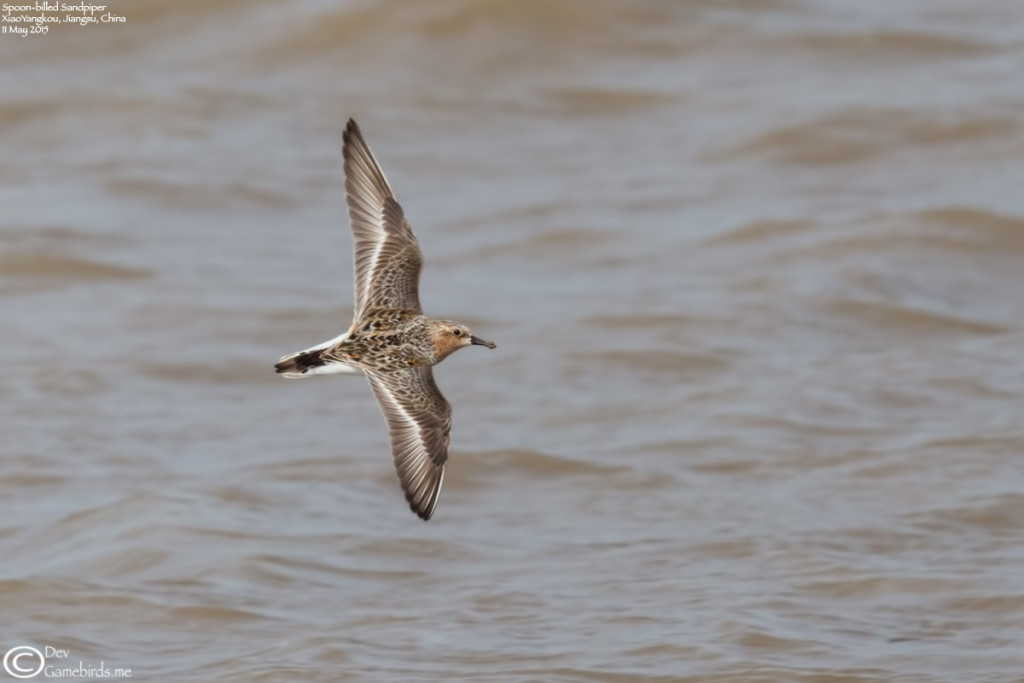
Not a spoonie, Red-necked Stint with a muddy bill
Species List :
| Species | Count |
| Japanese Quail | 2 |
| Common Pheasant | 2 |
| Little Grebe | 10 |
| Grey Heron | 4 |
| Great Egret | 2 |
| Intermediate Egret | 1 |
| Little Egret | 15 |
| Chinese Pond Heron | 3 |
| Black-crowned Night Heron | 20 |
| Common Moorhen | 5 |
| Eurasian Coot | 10 |
| Eurasian Oystercatcher | 4 |
| Grey Plover | 100 |
| Grey-headed Lapwing | 4 |
| Lesser Sand Plover | 200 |
| Kentish Plover | 20 |
| Little Ringed Plover | 5 |
| Terek Sandpiper | 300 |
| Common Sandpiper | 50 |
| Spotted Redshank | 35 |
| Common Greenshank | 100 |
| Marsh Sandpiper | 10 |
| Wood Sandpiper | 5 |
| Common Redshank | 15 |
| Whimbrel | 12 |
| Far Eastern Curlew | 50 |
| Eurasian Curlew | 4 |
| Bar-tailed Godwit | 300 |
| Ruddy Turnstone | 100 |
| Great Knot | 2 |
| Sharp-tailed Sandpiper | 50 |
| Curlew Sandpiper | 25 |
| Spoon-billed Sandpiper | 4 |
| Red-necked Stint | 100 |
| Dunlin | 300 |
| Saunders’s Gull | 50 |
| Whiskered Tern | 2 |
| Common Tern | 50 |
| Spotted Dove | 3 |
| Common Cuckoo | 1 |
| Common Kestrel | 2 |
| Amur Falcon | 3 |
| Brown Shrike | 3 |
| Black Drongo | 5 |
| Azure-winged Magpie | 10 |
| Eurasian Magpie | 2 |
| Oriental Skylark | 4 |
| Barn Swallow | 50 |
| Japanese Tit | 2 |
| Light-vented Bulbul | 10 |
| Manchurian Bush Warbler | 5 |
| Pallas’s Leaf Warbler | 4 |
| Yellow-browed Warbler | 3 |
| Arctic Warbler Complex | 3 |
| Pale-legged/Sakhalin Leaf Warbler | 2 |
| Oriental Reed Warbler | 10 |
| Marsh Grassbird | 8 |
| Zitting Cisticola | 3 |
| Hill Prinia | 5 |
| Vinous-throated Parrotbill | 10 |
| Chestnut-flanked White-eye | 10 |
| Oriental White-eye | 5 |
| Asian Brown Flycatcher | 3 |
| Grey-streaked Flycatcher | 6 |
| Yellow-rumped Flycatcher | 4 |
| Mugimaki Flycatcher | 2 |
| Eyebrowed Thrush | 2 |
| Crested Myna | 10 |
| White-cheeked Starling | 20 |
| Eastern Yellow Wagtail | 100 |
| White Wagtail | 10 |
| Richard’s Pipit | 50 |
| Forest Wagtail | 4 |
| Meadow Bunting | 12 |
| Tristram’s Bunting | 5 |
| Chestnut Bunting | 6 |
| Black-faced Bunting | 12 |
| Pallas’s Reed Bunting | 1 |
| Chinese Grosbeak | 20 |
| Eurasian Tree Sparrow | 15 |
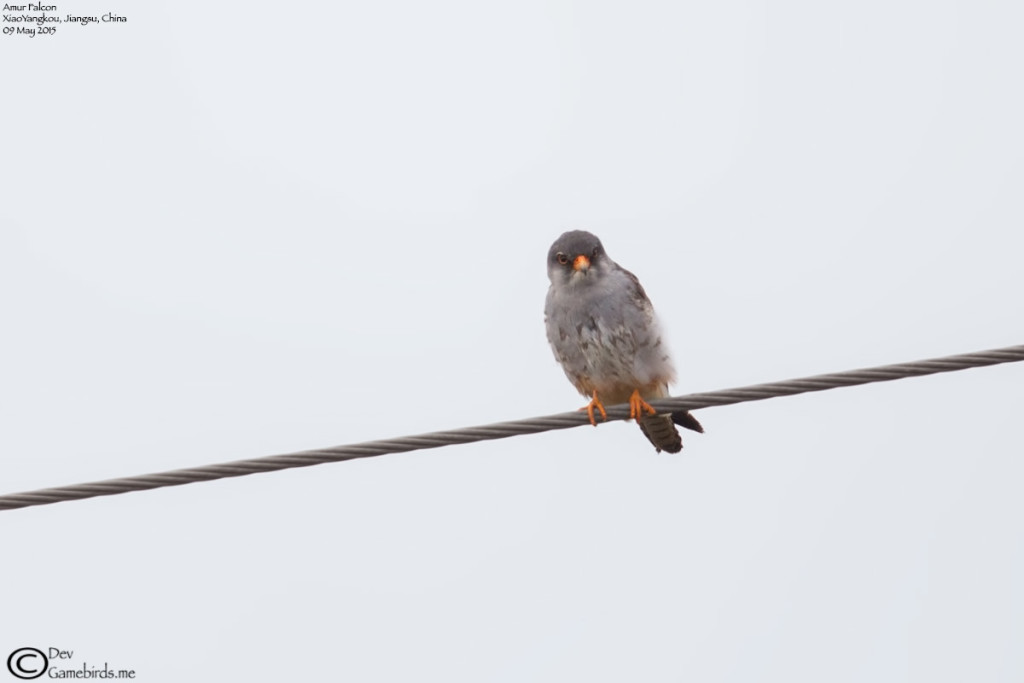
Recent Comments